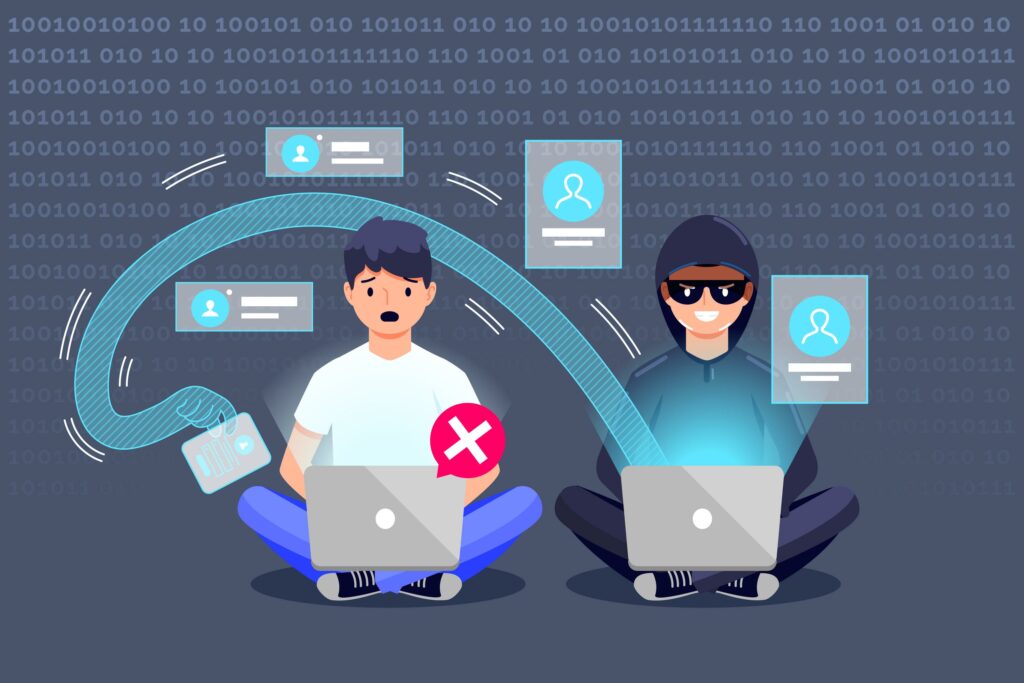Even before the pandemic, remote work was on the increase. It’s no surprise, considering businesses are able to cut costs while targeting the best talent from a wider pool. For workers, it’s a convenient alternative to rush hour traffic and office constraints.
Yet despite offering many perks, it also brings with it fresh security concerns that many companies overlook during the transition to remote work.
When the IT department no longer has full control from within the building, simple things like public Wi-Fi or personal devices introduce weaknesses that were never there before.
If you’re a remote employee or freelancer, a large part of the responsibility falls on you not to be the weak link in the chain.
Here are the remote work security risks you should know.

1. Phishing
Phishing attacks trick you into revealing sensitive information via fake communications or webpages.
While phishing is a concern to everyone, anywhere, including in the office, it is one of the primary remote work cybersecurity risks. This is because remoteness means more reliance on emails, instant messaging, and teams platforms for interactions.
Phishing attacks often exploit these channels by impersonating legitimate entities or colleagues, tricking remote workers into divulging sensitive information or clicking on malicious links.
Then, without the same standard of security software to successfully flag phishing links and pages in real-time, remote workers are more likely to fall victim.
2. Weak Passwords
Even when in-house staff don’t follow the password policies, there are other security measures that can detect internal account breaches and minimize the damage.
Remote workers aren’t so lucky. They’re also more likely to be lax in password management when policies aren’t hammered into them through posters and other workplace reminders.
The worst thing you can do when working from home is fall into the habit of password reuse. I.e., using the same or similar passwords across multiple accounts, including personal and work-related ones.
One of the biggest risks of allowing remote access to a network or system is the potential for unauthorized access and data breaches. Suppose a password is compromised on one platform. In that case, it can be used to gain unauthorized entry to other accounts, potentially leading to identity theft or an approach to sensitive company data.
Therefore, all passwords should be unique, at least 12 characters, and include a combination of upper and lower-case letters, numbers, and special characters.
A password should also exclude common words, personal info, or company info that could more easily be guessed.
Using a reputable password manager prevents you from having to memorize so many complicated unique passwords.
3. Malware and Viruses
Another one of the most common risks of remote working is the constantly evolving world of malware and viruses. The workplace will have its internal antivirus protection and firewalls, but that doesn’t always extend to the devices you use at home.
Even if you maintain a secure connection to the network, work-related files are at risk when saved to your own computer or tablet.
Depending on the malware’s sophistication, an infection could lead to data loss, unauthorized access to private company information, or your whole system being held to ransom.
At best this will disrupt your working day, but at worst it could cause huge financial ramifications for you and the business.
Therefore, one of the most effective working from home security tips is to purchase a proper antivirus suite with real-time protection to block incoming threats and protect work files and data.
That said, remote workers should always make use of secure cloud apps and file storage, if available. It’s harder for work files to be infected by a compromised device if they are never stored locally.
4. Personal or Shared Devices
You’re much more likely to expose a device to cyber threats when not focused solely on work tasks that require only certain apps and software.
Businesses should aim to provide secure and dedicated devices for their growing home worker base. When this isn’t practical, the next best thing is to separate personal and work devices yourself.
It’s also important not to share devices. That’s not to say your family members are going to deliberately compromise your security on the family PC, but they could just as easily fall for phishing scams or accidentally install malicious software as anyone else. Why take the risk?
If you are concerned about small children or nosy flat mates getting hold of your devices, make sure to use a password and lock screen combo to keep them at bay.
Furthermore, by using personal devices for work, there’s a blurring of boundaries between personal and professional life. It becomes harder to maintain work-life balance and distractions or interruptions may impact productivity and focus during work hours.

5. Unsecured or Public Wi-Fi
When you’re in the office, everyone uses the same secure internet service. At home, this could be your household broadband, or worse, public Wi-Fi at a coffee shop or other public place.
The shared nature of the latter makes you susceptible to attacks on the network. Public Wi-Fi often lacks encryption, making it easier for hackers to intercept and access sensitive data being transmitted.
There’s also no way of knowing what data the owner of the Wi-Fi might be logging, which does not bode well for private work activity.
To maintain security when employees work remotely, it is important to offer a secure connection to the work network. E.g., via a VPN. You can also provide dedicated work devices or only accept pre-approved devices on the network.
One way you can secure both home and public Wi-Fi connections is to use a VPN. This creates an encrypted tunnel, so your real-time internet traffic cannot be intercepted.
Ideally, businesses should provide their own VPN when granting access to remote workers. However, personal VPNs have a similar function.
At the least, your home Wi-Fi should use a strong password that differs from the default one on the router. You might then consider setting up a firewall that allows only trusted devices to connect to the network.
6. Public Eavesdropping
Remote work cybersecurity risks often cross over into physical security. Just because you are remote doesn’t mean you should work from anywhere with a comfortable seat.
Crowded coffee shops and even remote work hubs should be avoided if anything private might appear on screen in view of someone else. You never know who’s looking.
Likewise, don’t take Zoom meetings or calls in public if you are going to discuss sensitive information that others might hear.
Digital privacy is only as good as your real-word privacy.
7. Physical Theft
There’s also a greater risk of physical theft. By nature of the role, remote workers use their devices outside of secure office premises. If these are physically lost or stolen, the sensitive data stored on them can be exposed to unauthorized individuals.
Working from public spaces like coffee shops, airports, or co-working spaces increases the risk of device theft, as it may be easier for opportunistic thieves to snatch unattended devices or physically breach inadequate security measures.
Your remote work devices are also likely not under the same level of IT control or monitoring as office-based devices. This can make it challenging for organizations to remotely track or wipe stolen devices, increasing the risk of unauthorized access to sensitive data.
8. Legal Regulations and Compliance
Remote work cybersecurity also involves complying with legal regulations like HIPAA or GDPR, which can be more difficult without centralized monitoring.
Remote work involves the transfer and processing of data across various networks and devices. This raises concerns regarding data privacy and security, as different jurisdictions may have different regulations and standards in place.
Compliance also requires maintaining accurate documentation and records. With remote work, the physical separation of employees from the central workplace can make it harder to track and maintain necessary documentation, such as timesheets, incident reports, or training records.
Conclusion
Overall, a thorough work from home policy that reminds workers to use strong passwords, to stay alert for phishing scams, and to secure their devices with antivirus software can all help reduce risk.
You might also restrict work to a set suite of remote work apps and tools. Remote work security risks may seem obvious in hindsight, but it’s easy to slip up once you get into the flow of daily tasks outside of the office.
We’re all prone to using the odd weak password or logging onto the coffee shop Wi-Fi to quickly send a document.
Therefore, having self-discipline in securing your devices and following remote work security best practices is a key part of the process.
Once the risks are understood, individuals and organizations should work together to form effective working-from-home policies.



